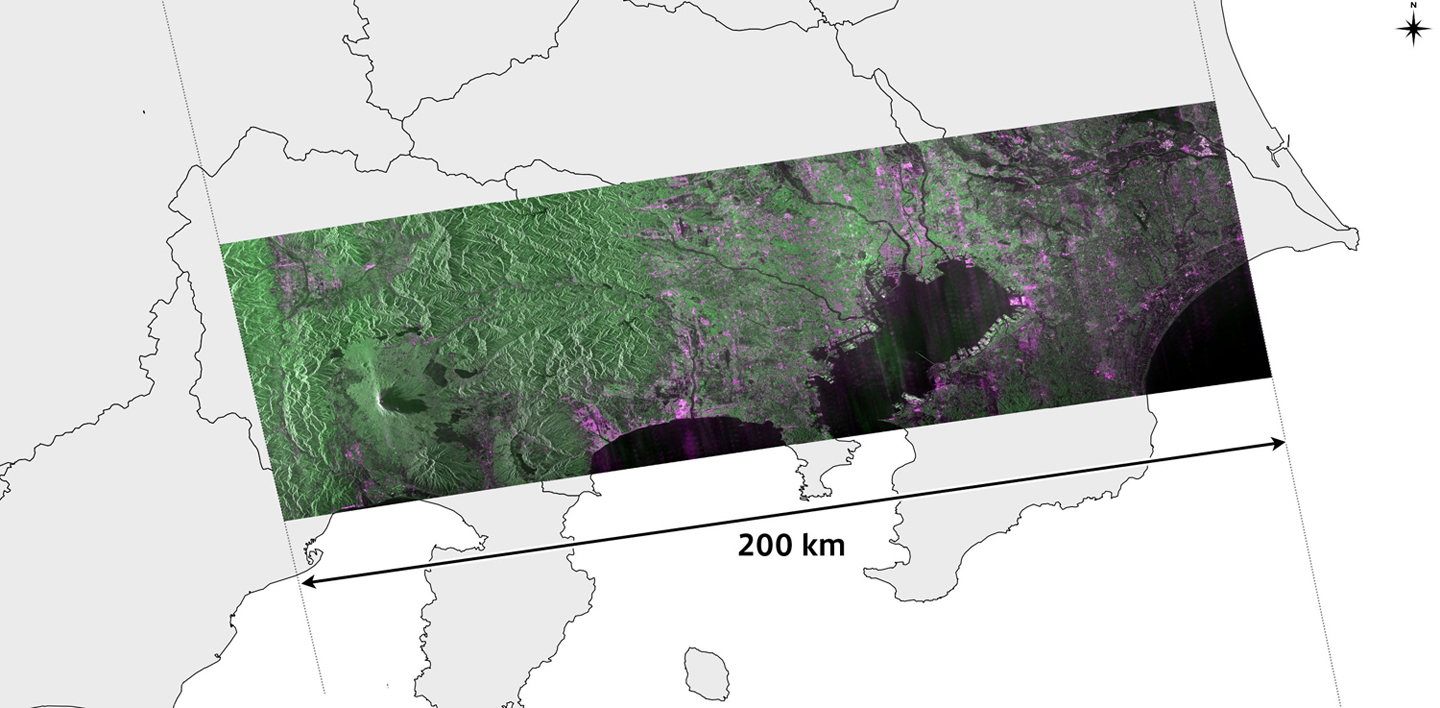- Space Systems
FOR IMMEDIATE RELEASE No. 3722

First observation image from the DAICHI-4 (courtesy JAXA)
TOKYO, August 6, 2024 - Mitsubishi Electric Corporation (TOKYO: 6503) announced today that the first observation images have been acquired in a radio-irradiation test conducted with the Phased Array type L-band Synthetic Aperture Radar-3 (PALSAR-3) on board the Advanced Land Observing Satellite-4 "DAICHI-4" (ALOS-4). The satellite, manufactured by Mitsubishi Electric under contract from the Japan Aerospace Exploration Agency (JAXA), was launched at 12:06:42 (Japan Standard Time) on July 1 aboard the third H3 Launch Vehicle from Tanegashima Space Center in Japan.
The new satellite's PALSAR-3 radar beams radio waves to Earth's surface and receives the reflected waves that are used to produce high-resolution images over wide areas. This capability will enable rapid monitoring of disaster-stricken areas, including in the event of multiple natural disasters over a wide area. Mitsubishi Electric began developing the DAICHI-4 in 2017 and was responsible for overall designing, manufacturing and testing at its Kamakura Works in Japan. The company also developed the PALSAR-3 radar for wide-area, high-resolution observations.
PALSAR-3 achieves the same level of high-resolution images as the radar on board the "DAICHI-2" (ALOS-2), but is also capable of wider, global-scale high-precision observations from an altitude of about 628 km. It will be used to monitor crustal and ground deformation, enabling early detection of abnormalities such as volcanic activity, ground deformation and landslides, as well as support more efficient management of forest resources.
Mitsubishi Electric continues to leverage its well-established expertise to develop and manufacture satellites as well as utilize satellite data to help address critical issues in society.
Inquiry
Media contact
Related articles
- Space Systems
-
Sep 19, 2024
-
May 29, 2024
-
May 09, 2024
